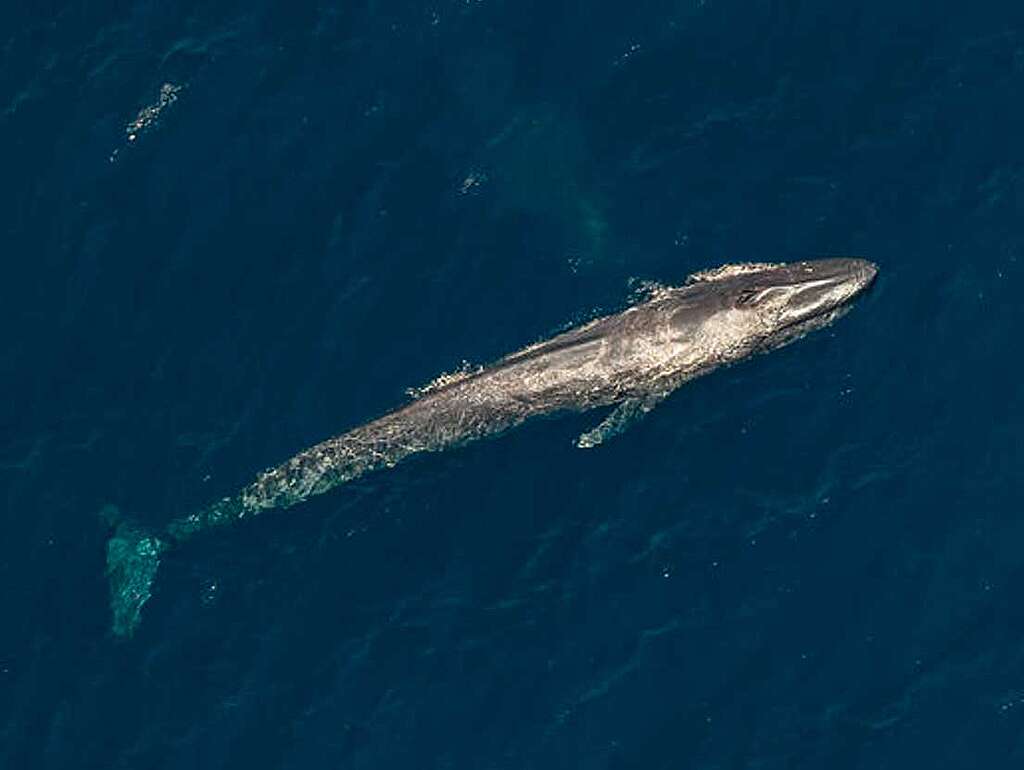Gas company Woodside’s plan for seismic blasting close to a whale migration “superhighway” off the coast of North Western Australia poses an unacceptable risk to endangered whale species and could threaten local tourism, according to a new report from Greenpeace Australia Pacific.
Woodside plans to start seismic blasting to assess fossil fuel gas reserves for its controversial Scarborough project before the end of the year. Greenpeace’s report, Blasting the Ocean: Woodside’s dangerous seismic plan found that Woodside’s plans skirt close to a major migration route for pygmy blue whales and to the UNESCO-protected Ningaloo Reef.
Greenpeace Australia Pacific senior campaigner Richard George said that Woodside has failed to mitigate the huge risk that its seismic blasting plans pose to marine wildlife.
“Seismic blasting is the one of the loudest sounds in the ocean, and the noise pollution can cause irreparable harm to whales’ hearing. Whales use their hearing to communicate and find food, so a deaf whale is a dead whale,” he said.
“Woodside’s dangerous seismic blasting plan went off half cocked, leaving its seismic vessel the Geo Coral idling off the coast of Western Australia for months while its plans are scrutinised by the regulator. But Woodside could get the go ahead as early as December, meaning seismic blasting could take place during peak traffic season on the North West coast’s whale migration superhighway. This could have a devastating impact on whale populations, and Western Australia’s multi-million dollar marine tourism industry – and all to exploit more gas and make climate change worse.
“Greenpeace believes that Woodside’s environmental plan for seismic blasting should not be accepted by the offshore gas regulator NOPSEMA, due to this unacceptable risk to whale populations.”
Global cetacean expert Dr Lindy Weilgart said that pygmy blue whales are particularly sensitive to noise pollution from seismic blasting and that Woodside should do more to mitigate the risk to whales.
“Baleen whales such as the pygmy blue whale would be expected to be particularly sensitive to seismic airgun noise. At minimum, seismic surveys should avoid Marine Protected Areas, with an adequate noise buffer. Also, there are quieter alternatives to seismic airguns that should first be explored, at the very least,” she said.
“Oil and gas deposits should stay in the ground if we are to avoid the worst scenarios of climate breakdown.”
Tourism operator Sarah Ellis of Ningaloo Discovery said that her business relies on healthy whale populations for its operation.
“For Ningaloo Discovery to continue to provide a sustainable ecotourism product we rely on a healthy whale population migrating along the Ningaloo Reef. We do not support any practices that could harm or be a detriment to any marine life in any way. Seeing Western Australia’s magnificent whales in their natural environment is an important educational tool for promoting environmental conservation and long term sustainability,” she said.

Key findings from the Blasting the Ocean report
- Woodside Energy aims to start risky seismic surveying for its Scarborough gas project before the end of 2022. The process uses underwater airguns to blast powerful sound waves towards the seabed to identify fossil fuel reservoirs beneath the ocean floor.
- The area Woodside plans to conduct seismic surveying in is in proximity to whale migration routes and close to the UNESCO-protected Ningaloo Reef.
- Seismic surveying can seriously injure whales and potentially kill other marine life. A growing body of research indicates that this noise pollution can damage, sometimes permanently, the hearing of whales and fish, as well as kill important prey species like plankton.
- Greenpeace believes that Woodside’s plan poses a particular threat to pygmy blue whales. This includes conducting seismic blasting activities during the endangered pygmy blue whale migration periods.
- A worst-case scenario accident during seismic surveying could impact marine wildlife almost 1,000km away, potentially affecting four Marine Protected Areas.
—ENDS—
